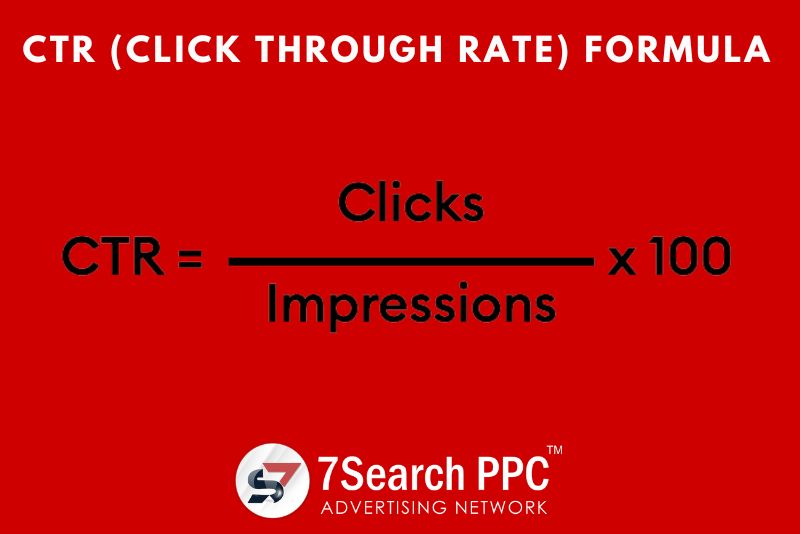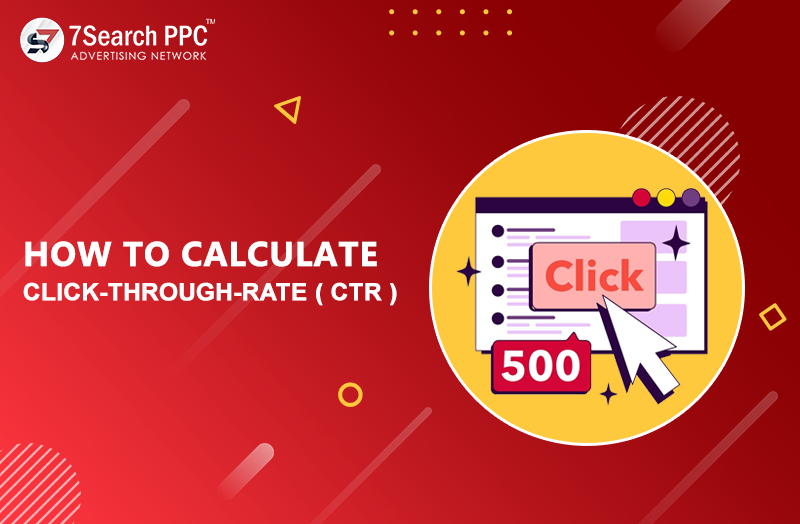Hello Readers, it’s a pleasure to have you on our blog. Before we start our discussion, let me ask you something: how are you measuring your ad performance? Do you have any specific tactic or formula in place for this crucial evaluation? No, then, it is not a matter of worry because you are reading a perfect blog for you and your advertising effort.
In this mind-blowing blog, we will be going to explore effective ways to measure and optimize your ad performance, with a strategic focus on Click Through Rate. Excited? Well, you should be because you finally got a blog which you have been looking for a long time. We assure you that after reading this blog, you will master the evaluation of each advertisement or link that you are using in your digital marketing campaign.
The Art And Impact Of Click Through Rate
Click through rate, or we can call it CTR (or Click Through Rate) also, is a key performance indicator that measures the effectiveness of the online advertising campaign. It shows the percentage of the audience who click on your ad or link compared to the total number of impressions (people who saw it) the ad gets during the running time.
Now you might be thinking, what is the use of calculating CTR? Isn’t it? Have patience, my friend; we will clear everything in this blog. The motive of CTR totally depends on your advertising game and objectives. If you want to make your brand famous, then getting eyes on your ads is enough for you.
If you want to see how many people are actually showing interest in your ads by clicking on them, then you need to calculate CTR to know whether your ads are getting “High CTR” or “LOW CTR.”
High CTR
A high CTR (or click through rate) is like giving a digital thumbs-up that shows that your ad’s content perfectly resonates with your audience. It is a positive sign that your online marketing strategy is going in the right direction. The elements that bring a high CTR on the ad are as follows
-
- Attractive Visuals
- Ad Placement
- Compelling Copy
Low CTR
A low CTR suggests that the ad is not effectively capturing the attention of the audience. It is like a red signal that shows the ad must need an improvement in the following elements
-
- Content Quality
- Message Refining
- Design Optimization
- Targeting A Different Audience
Click, Count, Conquer: Steps To Calculate Click Through Rate
Calculating CTR is a quick process that can be done using the following three steps –
Step 1: Uncover The Click Through Rate Count
The first step is to determine the number of clicks your running ads get during a specific campaign period. You can find the number of clicks your ad or destination URL link received on the analytics or reporting section of the platform where you are running your ads.
Step 2: Determine The Reach Of Your Message
The second step is to find the total number of impressions your ads receive. You can easily find the data on the analytics or reporting section of the platform that you select for your campaign.
Step 3: It’s Time To Calculate The CTR
After obtaining the number of clicks and impressions, you can simply put the numbers into the given formula –
Formula
Click Through Rate (CTR) = (Number Of Clicks / Number Of Impressions) x 100

Let’s break down how the click through rate (or CTR) formula works through an example. Suppose you want to know the performance of your ad to check whether your marketing strategy is on the right path or not. You go to the analytics section of the advertising platform. In that section, you noted that your ad received 100 clicks and 1500 impressions during a campaign.
The CTR would be
CTR = (100 / 1500) x 100
CTR = 0.066 X 100
CTR = 6.66%
What Defines A Stellar Click Through Rate?
A stellar click through rate signifies the effectiveness of a link or ad. Now, the question arises of what percentage of CTR is considered to be a safe zone. A CTR of 5% or more is considered a positive sign; it reflects strong user engagement and relevance. This benchmark shows that a large portion of the audience finds the ad compelling enough to take action.
How To Decode Click Through Rate?
Understanding the effectiveness of your ad campaigns requires decoding the click through rate (CTR). We have researched the following points that you can consider in decoding CTR –
- Context Matters If you want to decode the CTR, then you must consider the context of your campaign or content. A good CTR depends on various factors, including the industry, platform, particular goals, etc, of your campaign.
- Benchmarking You must compare your CTR to industry benchmarks; it will help you to understand how well your marketing performance is going in comparison to similar content or ads.
- Positive CTR A positive CTR indicates that a significant portion of your audience finds the content or ad appealing and is taking the desired action.
- Negative CTR It suggests that your content may not be resonating with your audience or your ad might not be compelling enough.
- Check Other Metrics Measuring the success of your efforts with CTR alone is insufficient. If you want to see a complete picture of your effort as an advertising manager, you should take into consideration additional metrics like ROI and Conversion rate.
Optimizing Click Through Rate: Proven Methods For Improvement
Optimizing your ad campaigns and increasing audience engagement requires improving your click through rate (CTR). Here are some effective ways to boost CTR –

- Captivating Headlines You must create headlines that draw readers in and motivate them to click and show interest. You can use the following elements to generate curiosity inside the audience –
- Figures
- Intriguing Remarks
- Enticing Questions
- Straight-forward Call to Action (CTA) You must make your call to action clear, simple, and visually appealing. It will help the audience to understand what to do next and why it will benefit them.
- Relevant And Engaging Content You make sure the ad or link’s content lives up to what users would anticipate. You can offer the following thing that appeals to your target audience and can make your pay-per-click campaign successful-
- Insightful Knowledge
- Practical Advice
- Engaging Content
- Ad Placement and Design Ad placement and design play a crucial role in improving the CTR. You must make your ads stand out without being obstructive by optimizing their placement and design. You can use the following elements to draw attention and preserve a satisfying user experience-
- Color
- Size
- Placement
- A/B Testing You can check various iterations of your advertisements or content to see which one is performing best with your target audience. You must try various CTAs, headlines, images, and positioning to keep your campaigns getting better over time.
Influential Elements Impacting Click Through Rate
The click through rate of your content or adverts can be influenced by a number of things. Gaining insights into these variables enables you to optimize your PPC campaigns and your social media marketing efforts.
Here are a few significant variables that may affect CTR
- Relevance A major factor in CTR is how closely your advertisements or content matches the user’s purpose. You must make sure while making ads that the content you are sending out corresponds with what the audience in your target demographic is looking for or anticipating.
- Targeting Precise targeting is necessary to maximize CTR. First of all, you know your customers and make sure that the people who are most likely to interact with your material see it by focusing your audience according to their demographics, hobbies, and tastes.
- Competition CTR may be impacted by the degree of competition in your industry. It could be harder to stand out and have a high CTR if rivals are aiming for the same audience or set of keywords.
How Click Through Rate Shapes Search Engine Rankings?
Search engine rankings may be influenced indirectly by the click through rate. CTR is not a direct ranking criterion in and of itself; it does affect other metrics that search engines take into account. Search engines take a user’s repeated click through rate on a specific webpage or search result as an indication of its relevance, quality, etc. A high CTR can also make your content or website more visible, which will result in an increase in organic clicks and traffic. Your website’s authority and credibility can be further enhanced by this wider audience, which can improve search engine results.
Crafting High CTR Content: Strategies For Organic Success
We have researched the following best practices for optimizing your content for a high CTR. Please have a look-
Title Tags And Meta Description–
You must create attention-grabbing and concise title tags and meta descriptions to motivate the user to click on the ad and link. Remember to provide a clear value proposition within the allotted character account and pertinent keywords.
Structured Data Markup
You can use structured data markup to improve the way your website appears in search engine results. Rich snippets can improve CTR and make your listing more appealing by including essential information.
Utilize Social Proof
You must use social proof components to establish credibility and trust, such as client endorsements, ratings, or reviews. Audiences are more likely to click on your ads or links if you receive positive social feedback. These positive feedbacks can motivate the audience that it is safe to do a particular action.
Make Use Of Rich Media
Many businesses are using rich media to grab the attention of the audience. You can also include rich media components in your content, such as eye-catching pictures, videos, and infographics.
Regular Monitoring
You must keep an eye on and evaluate your CTR statistics on a regular basis to spot trends, patterns, and potential improvement areas. You can also employ analytics software to monitor the effectiveness of your content, landing pages, and advertisements. It is essential to modify your strategy based on the results you get.
Final Words
CTR is like the result of the examination that shows you the marks of your total advertising efforts during a campaign. In a digital marketing world, understanding the method to calculate Click Through Rate is essential. After mastering this metric, you are now ready to increase the effectiveness of your online presence and can re-adjust your strategies for maximum impact. CTR is not just a percentage to look at and ignore; it’s a powerful guide that empowers you to make a bond with your audience and attain your digital objectives and goals.
Frequently Asked Questions (FAQs)
What is a Good CTR?
Ans. A good CTR varies by industry, but a CTR above 2% is considered decent, while a CTR above 5% is regarded as a good CTR.
What factors influence CTR?
Ans. Dear friend, there are the following factors that can influence CTR –
- Relevant Content
- Compelling Visuals
- Clear call-to-action (CTA)
- Targeted Audience
What is the difference between CTR and conversion rate?
Ans. The difference between the CTR and the conversion rate is that CTR measures click, and the conversion rate tracks the percentage of those clicks that convert into a desired action, such as sign-up, purchase, etc.



















